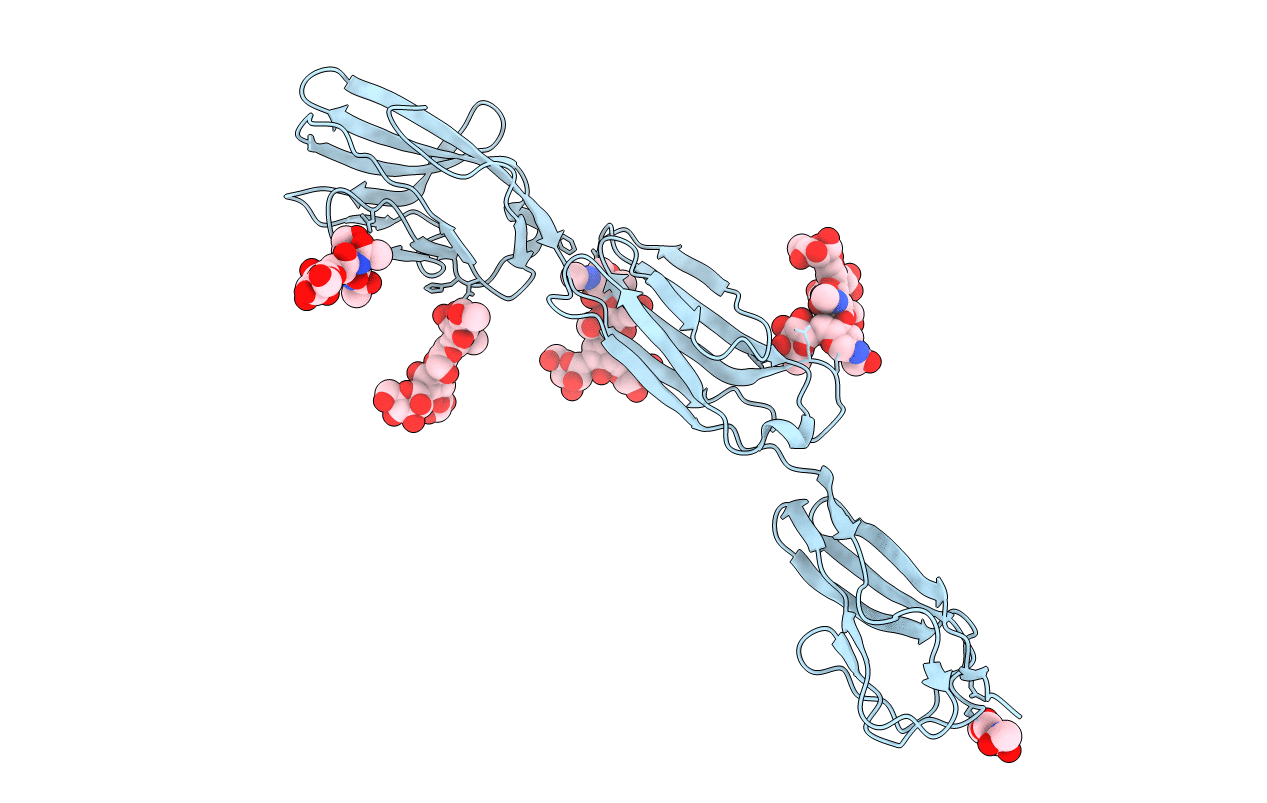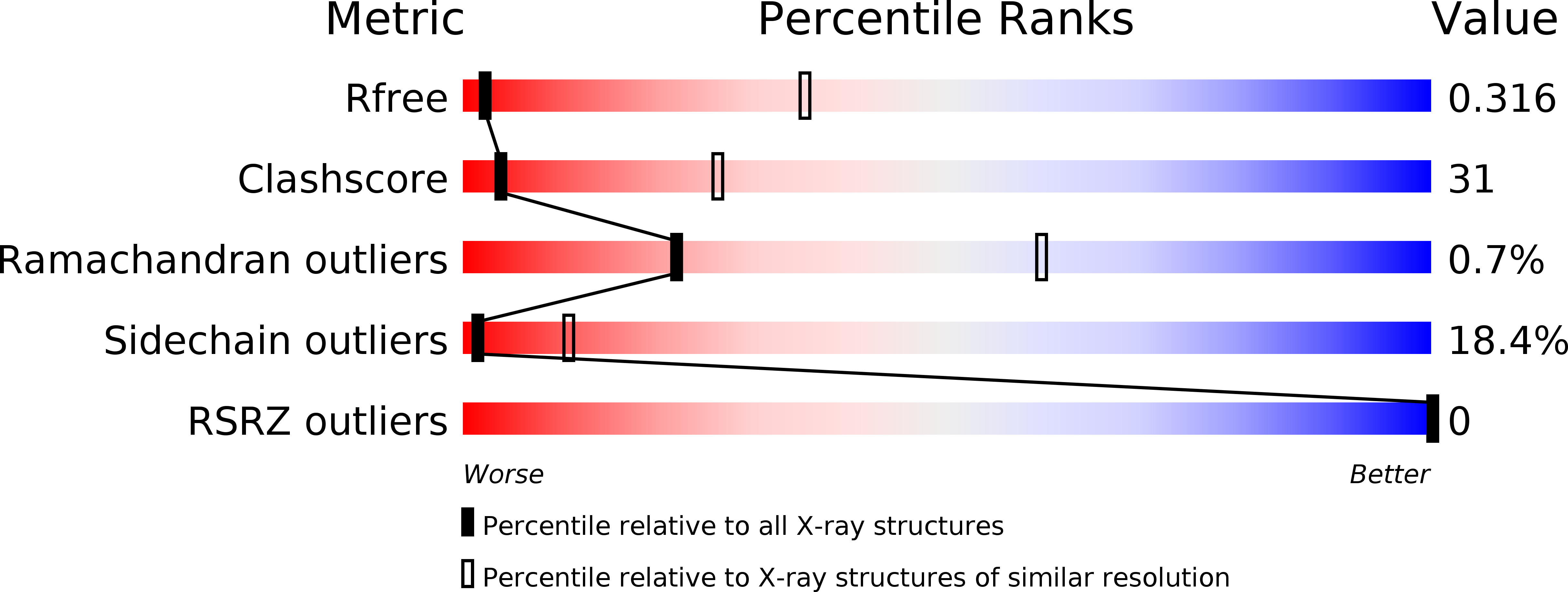
Deposition Date
2012-06-20
Release Date
2012-08-22
Last Version Date
2024-10-16
Entry Detail
PDB ID:
4FOM
Keywords:
Title:
Crystal structure of human nectin-3 full ectodomain (D1-D3)
Biological Source:
Source Organism:
Homo sapiens (Taxon ID: 9606)
Host Organism:
Method Details:
Experimental Method:
Resolution:
3.93 Å
R-Value Free:
0.27
R-Value Work:
0.24
R-Value Observed:
0.24
Space Group:
P 65 2 2


